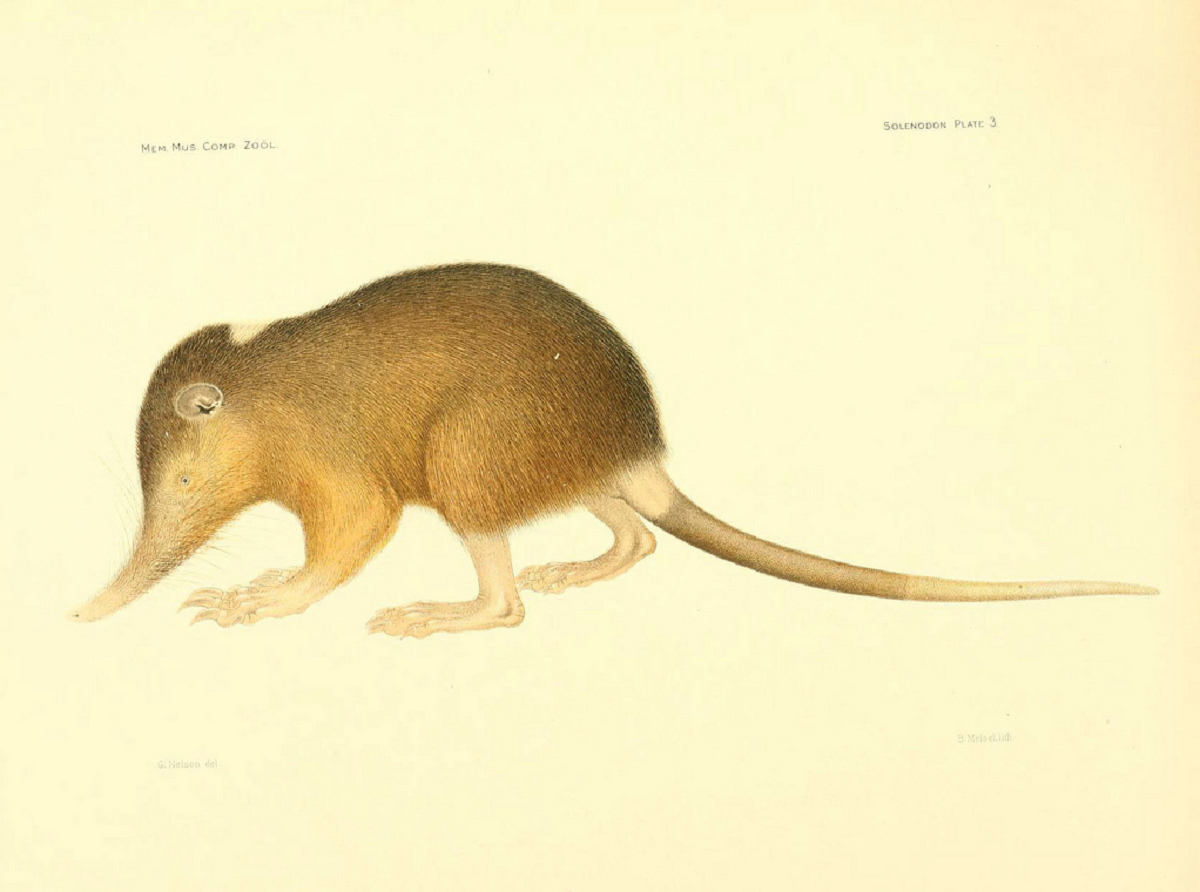SPbU scientists decoded the genome of an elusive nocturnal animal

The international group of researchers including geneticist of St Petersburg University studied the genome of the Haitian solenodon, one of the few venomous mammals on Earth.
The results of the study aimed at helping to preserve a species that is under threat of extinction are published in the GigaScience journal.
Solenodons are insectivorous animals found today only in the Caribbean islands. These animals resembling large rats with a long nose are some of the very few venomous mammals, along with platypi, slow lorises and some species of shrews. Moreover, the solenodon is one of the most ancient mammals separated from other insectivores in the time of dinosaurs, more than 70 million years ago.
The specialists of the Theodosius Dobzhansky Centre for Genome BioInformatics, headed by Stephen J. O’Brien and their colleagues from the University of Puerto Rico studied one of the two species of these animals — the Haitian solenodon (Solenodon paradoxus). These mammals were isolated both genetically and territorially: they can be found only in remote corners of the Haiti island. The nocturnal habits make these animals elusive and therefore almost inaccessible for study. That is why, in order to track down the solenodons, scientists had to seek help from their colleagues at the universities of Santo Domingo, Dominican Republic, who are well aware of the jungle.
It was not easy to conduct the genome studies: the researchers had difficulties with allocating and transporting the necessary amount of DNA to the laboratory, so they had to deviate from the standard strategy of assembling the genome de novo. Scientists have decided to combine several sets of genomic data obtained from different animals. Also, the string graph model was used, although the de Bruijn graphs are usually applied for genome assembling. Such a solution proved effective in working with homozygous solenodon genomes, as these animals lived in isolation for tens of millions of years, which means that the genome was greater influenced by the genetic drift than natural selection.
"One of the key results of our research is the confirmation of the applicability of our approach to assembling genomes with low heterozygosity from low coating," said Kirill Grigoriev, lead author of the article, the University of Puerto Rico. "This means that it is the best one for working with rare species of animals, because such cases prove difficult for obtaining high-quality samples and sequencing them with a larger coating. And it is rare animals that often have low heterozygosity."
After assembling the genome, the researchers received enough information to answer many questions about the evolutionary development of endangered animals.
300
thousand years ago, the Haitian solenodon was divided into two subspecies: the northern and the southern ones.
Therefore, while striving for the preservation of unique mammals, one must understand that Haitian solenodons are two groups of animals that may require developing completely different breeding strategies for them.
In addition, the obtained data made it possible to shed light on the issue of solenodon speciation. According to the researchers, the animal separated from the other insectivorous mammals about 73.6 million years ago, that is, long before the mass extinction of species at the end of the Cretaceous (65.5 million years ago), when most of the dinosaurs disappeared.
"In order to successfully complete this project, we had to compromise and apply certain non-standard approaches," said Pavel Dobrynin, a researcher at the Theodosius Dobzhansky Centre for Genome Bioinformatics of St Petersburg University. "The assembled genome will be an excellent resource for both biologists and species conservation specialists, as it will help not only to learn more about the solenodons and their history but to make it possible to compare this unique animal with other mammals at the level of structure and organisation of the genome."

